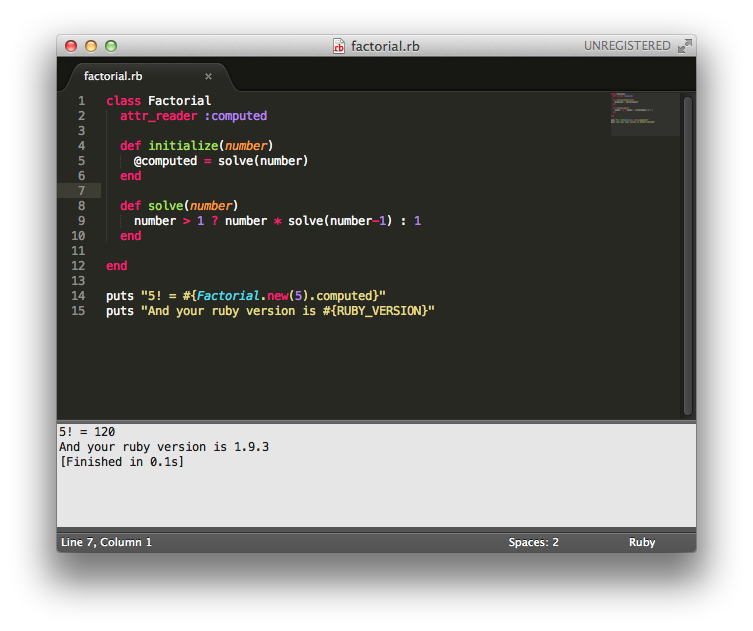 Did you know it’s possible to run (aka build) your Ruby code straight from inside of Sublime Text 2?
Did you know it’s possible to run (aka build) your Ruby code straight from inside of Sublime Text 2?
That’s easy, just make sure your code is saved as a .rb file and hit Command+B. But wait, there’s more…
Did you also know it’s possible to run your Ruby code straight from inside of Sublime Text 2… using RVM’s default Ruby?
There might be a better way but here’s one a quick and dirty for an OSX environment. If you are using Linux, it’s hopefully the same but with the file paths modified:
Step 1:
Cut a hole in a box.
Step 2:
Open `~/Library/Application Support/Sublime Text 2/Packages/Ruby/Ruby.sublime-build`
And replace it’s contents with the following (be sure to substitute your user name):
Step 3:
- Launch Sublime Text 2
- Open a ruby file
- Hit Command+B
- The Sublime Text console should pop up with your output. If you want it to go away, hit escape.
Want to prove it’s working?
Here’s a quick script that computes factorial and then prints out the result AND the ruby version using ruby’s constant “RUBY_VERSION”:
Drop that into your own factorial.rb, open it in Sublime Text, and hit Command+B. It should look something like this:

As you can see above, that’s 1.9.3… and as you can see below… that’s what my RVM is set to use as it’s default ruby.




